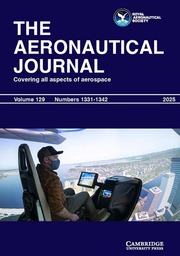Crossref Citations
This article has been cited by the following publications. This list is generated based on data provided by Crossref.
Ženíšek, Alexander
and
Zlámal, Miloš
1970.
Convergence of a finite element procedure for solving boundary value problems of the fourth order.
International Journal for Numerical Methods in Engineering,
Vol. 2,
Issue. 3,
p.
307.
Bramble, James H.
and
Zlámal, Miloš
1970.
Triangular elements in the finite element method.
Mathematics of Computation,
Vol. 24,
Issue. 112,
p.
809.
Kratochvíl, J.
Ženíšek, A.
and
Zlámal, M.
1971.
A simple algorithm for the stiffness matrix of triangular plate bending elements.
International Journal for Numerical Methods in Engineering,
Vol. 3,
Issue. 4,
p.
553.
Taylor, Robert L.
1972.
On completeness of shape functions for finite element analysis.
International Journal for Numerical Methods in Engineering,
Vol. 4,
Issue. 1,
p.
17.
Wei-zang, Chien
1980.
The explicit forms of field functions in totrahedron element with 16 and 20 degrees of freedom.
Applied Mathematics and Mechanics,
Vol. 1,
Issue. 2,
p.
159.
Masayuki, Okabe
Yoshiaki, Yamada
and
Isoharu, Nishiguchi
1980.
Basis transformation of trial function space in lagrange interpolation.
Computer Methods in Applied Mechanics and Engineering,
Vol. 23,
Issue. 1,
p.
85.
Masayuki, Okabe
and
Kikuchi, Noboru
1981.
Some general lagrange interpolations over simplex finite elements with reference to derivative singularities.
Computer Methods in Applied Mechanics and Engineering,
Vol. 28,
Issue. 1,
p.
1.
Masayuki, Okabe
1983.
Gauss-Jacobi quadrature rules for n-simplex with applications to finite element methods.
Computer Methods in Applied Mechanics and Engineering,
Vol. 40,
Issue. 3,
p.
293.
Okabe, Masayuki
and
Kikuchi, Noboru
1983.
Semi-radial singularity mapping theory for line singularities in fracture mechanics.
Computer Methods in Applied Mechanics and Engineering,
Vol. 36,
Issue. 3,
p.
257.
Subramanian, G.
and
Bose, C.Jeyachandra
1983.
On stiffness matrices for C0 continuous tetrahedra.
Computers & Structures,
Vol. 16,
Issue. 5,
p.
603.
El‐Zafrany, A.
and
Cookson, R. A.
1986.
Derivation of Lagrangian and Hermitian shape functions for triangular elements.
International Journal for Numerical Methods in Engineering,
Vol. 23,
Issue. 2,
p.
275.
Grieger, Ingolf
1987.
Graphische Datenverarbeitung.
p.
170.
2003.
Finite Element Method.
p.
342.
Zienkiewicz, O.C.
Taylor, R.L.
and
Zhu, J.Z.
2005.
The Finite Element Method Set.
p.
103.
Zienkiewicz, O.C.
Taylor, R.L.
and
Zhu, J.Z.
2013.
The Finite Element Method: its Basis and Fundamentals.
p.
151.
Liu, G.R.
and
Quek, S.S.
2014.
The Finite Element Method.
p.
161.
2014.
The Finite Element Method.
p.
423.
Neto, Maria Augusta
Amaro, Ana
Roseiro, Luis
Cirne, José
and
Leal, Rogério
2015.
Engineering Computation of Structures: The Finite Element Method.
p.
157.
Hahn, Manfred
and
Reck, Michael
2018.
Kompaktkurs Finite Elemente für Einsteiger.
p.
1.
Haines, John
Wallace, Laura M.
and
Dimitrova, Lada
2019.
Slow Slip Event Detection in Cascadia Using Vertical Derivatives of Horizontal Stress Rates.
Journal of Geophysical Research: Solid Earth,
Vol. 124,
Issue. 5,
p.
5153.

